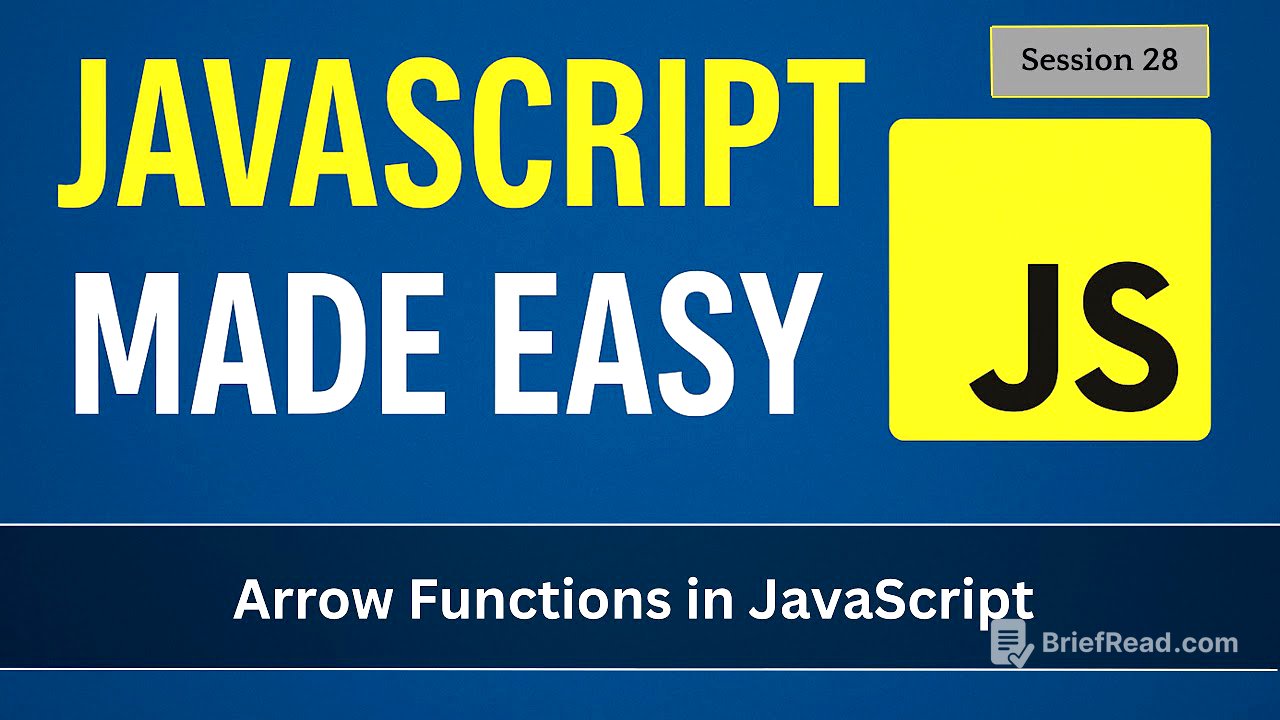TLDR;
This video explains arrow functions in JavaScript, highlighting their shorter syntax compared to traditional functions. It covers the basic structure of arrow functions, how to convert traditional functions into arrow functions, and various scenarios including functions with no parameters, single parameters, and multiple parameters. The video emphasizes when to use curly braces and return statements, and how arrow functions simplify code, especially when used with array methods.
- Arrow functions provide a more concise way to write functions in JavaScript.
- Understanding arrow functions is crucial for using advanced array methods.
- The syntax varies based on the number of parameters and the complexity of the function body.
Introduction to Arrow Functions [0:00]
The session introduces arrow functions in JavaScript, explaining why they are being covered before array methods part two and three. Understanding arrow functions is essential to grasp the remaining methods used with arrays. Traditional functions, while functional, are lengthier compared to arrow functions, which offer a shorter syntax.
Traditional vs. Arrow Functions [1:50]
Traditional functions in JavaScript typically involve more lines of code, whereas arrow functions provide a shortcut, allowing the same functionality to be written in a single line. For instance, a traditional function to add two numbers requires multiple lines, including the function keyword, name, parameters, and return statement. Arrow functions achieve the same result more concisely.
Converting to Arrow Functions [2:54]
To convert a traditional function into an arrow function, start with the let or const keyword, followed by the function name. Instead of using the function keyword, use an equals sign and then specify the parameters in circular brackets. After the parameters, use the => (arrow) symbol, followed by the function body. If the function body is a single line, curly braces and the return keyword can be omitted.
Calling Arrow Functions [4:48]
Arrow functions are called in the same way as traditional functions. The primary difference lies in the syntax of defining the function. Arrow functions offer a more compact representation, reducing the amount of code needed.
Practical Demonstration: Arrow Functions in JavaScript [7:32]
A JavaScript file is created to demonstrate arrow functions. A traditional function for adding two numbers is written first, followed by its arrow function equivalent. The arrow function uses a shorter syntax, omitting the function keyword and using the => symbol. When the function body consists of a single return statement, the curly braces and return keyword can be further omitted.
Functions with No Parameters [11:58]
When an arrow function has no parameters, empty circular brackets are used. The function body then executes without any input. For example, a function that simply prints "hello" to the console can be written as an arrow function with no parameters.
Functions with One Parameter [13:06]
If an arrow function has only one parameter, the circular brackets can be omitted. The function can directly use the parameter in its body. For instance, a function that prints the value of a single parameter can be simplified by removing the brackets around the parameter.
Functions with Multiple Statements [15:19]
When an arrow function contains multiple statements, the function body must be enclosed in curly braces. Additionally, a return statement is required to return a value. This is similar to traditional functions, but the overall syntax remains more concise due to the use of the => symbol.
Conclusion and Next Steps [16:39]
The video concludes by summarizing the key aspects of arrow functions, including when to use curly braces, when circular brackets are necessary, and when the return statement is required. Understanding arrow functions is crucial for the upcoming sessions on array methods, as these methods often utilize arrow functions for concise and efficient code.









